|
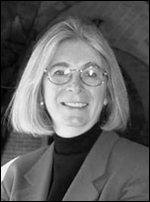
|
|
After helping lay the groundwork that led to CTS's financial turnaround and institutional renewal, professor Susan Thistlethwaite was elected to the presidency by the board of trustees in 1998.
|
Until 1993, Susan Thistlethwaite, a professor of theology at the Chicago Theological Seminary and director of its Ph.D. center, was, in her own words, “blissfully ignorant” of the institution’s financial picture. She was an educator who enjoyed teaching and was known for her work as a feminist theologian. But that year there was a growing unease at the venerable seminary, which traces its history back to 1855. Deficits were increasing. The seminary didn’t have a clear picture of its financial condition.
Thistlethwaite and another theologian, Ted Jennings, decided to look at the whole seminary budget and do a structural analysis of its spending patterns to show what would happen if the patterns continued. They discovered to their horror that without corrective action the seminary would probably go broke by 1997.
Aroused, Thistlethwaite and Jennings took action. They and their fellow faculty members worked collaboratively with the board of trustees and the administration to change red ink to black. The result was a remarkable turnaround.
Now, seven years later, Chicago Theological Seminary has more than doubled its endowment—from $6 million to $14 million—and balances its budgets. Thistlethwaite is now the seminary’s eleventh president, chosen by the same board she had worked with as part of the turnaround effort. Kenneth Smith, her predecessor, guided CTS through the initial diagnosis and presided over the period of the most difficult cost cutting.
A Learning Curve
Tom Fulton, a retired corporate executive who has served on the Chicago Theological board since 1991 and has been its chairman since 1994, said the process of getting a better understanding of the school’s financial picture was a gradual one. “There wasn’t one moment when things became clear,” he said.
The changes came as Fulton and other board members started to ask questions that enabled them to get a better hold on the overall situation. “It became obvious that our draw from endowments was too severe.”
When Fulton started on the board, the dean was the only faculty member participating in the meetings. Soon, though, meetings were opened up to all teachers. The ensuing dialogue between board and faculty led to a sense of common purpose that made the cost reductions possible.
Thistlethwaite said faculty involvement made a huge difference. “When Tom shakes down the financials and asks the questions, everyone is at the table. That’s how we’ve avoided the real uproar other schools have experienced in similar situations.”
Initially, Fulton said, some trustees, especially those with business backgrounds, felt letting faculty in the board room was like “letting the union in.” But the result was more personal contact and more understanding.
Fulton still recalls his first audit report at CTS. “I was shaking my head. There was everything. It was all in funds accounting.” He and others worked with faculty to achieve clearer statements. Anything that masked the deficit was changed. “We tried not to get tied up with noncash items like depreciation and growth in our portfolio,” he added.
“What we learned from Tom was ‘Follow the cash’ and ‘Be sure you know where you stand,’” said Thistlethwaite.
Elements of Change
The turnaround wasn’t easy, and some luck was involved. Take for instance the faculty complement. When CTS was running deficits, it had twelve full-time professors. Fortunately three were on the verge of retirement, and those positions weren’t filled. Subsequent departures eventually reduced the faculty to six. The seminary made do by hiring much cheaper adjunct teachers, and asking those on staff to teach courses beyond their specialties.
There were further cuts. The position of dean of students was eliminated. The administrative staff was shrunk. Salaries were frozen.
“We stopped it cold,” said Thistlethwaite, referring to the red ink. “We developed sort of a bunker mentality.” While her specialty was feminist theology, Thistlethwaite recalled teaching Bible, history, philosophy, and ministry courses as well. “We thought of it as a rescue mission.”
But the goal of the rescue mission wasn’t just survival. It was to reinvigorate and rebuild an institution well known for being on the cutting edge of theological education with an emphasis on justice and serving a diverse constituency including racial minorities and gays and lesbians.
Student enrollment fluctuated during the down times, according to Thistlethwaite, primarily because of a staffing gap while they sought to replace an outstanding director of admissions who left to take a pastorate. Overall, however, the school has experienced what Thistlethwaite called “enormous growth.” CTS reported 182 students in 1992, 235 last year. The increase is credited in part to a renewed emphasis on recruitment. The growth has helped the bottom line, since about one-third of CTS’s income comes from tuition. While CTS had to cut scholarship grants in half as part of its austerity program, student aid was among the first things restored as times got better.
One of the watershed events that CTS trustees, administrators, and faculty members all point to was a 1995 board-faculty retreat at which a new vision statement was developed over two days of conversation. Thistlethwaite was one of the four members of the drafting team.
She said the vision statement, along with the mission statement and commitment statements developed out of it, helped the seminary refocus its efforts. “We had been spreading out; trying to be all things. That was the source of the deficit. As we consolidated, we were able to start saying no.”
An Unsought Presidency
At first glance Thistlethwaite seems an unlikely president. Her only experience in administration was directing the CTS doctoral program. She is an ordained minister of the United Church of Christ with a Ph.D. from Duke University and a master of divinity from Duke Divinity School. She was a professor of theology for sixteen years before being appointed president and has written or edited ten books including The New Testament and Psalms: An Inclusive Translation and Lift Every Voice: Constructing Christian Theologies from the Underside, a widely used theology textbook.
Thistlethwaite did not seek the presidency and believes her work on the turnaround and the vision statement may have been a factor in the trustees asking her to be a candidate. After a national search, however, she was one of six finalists and the search committee’s first choice.
The key to Thistlethwaite’s presidency is a deep commitment to Chicago Theological Seminary and belief in its vision and mission, combined with a willingness dedicate herself wholeheartedly to administration. “It’s a real sacrifice to give up teaching,” she said in an interview, but she believes so strongly in CTS that the sacrifice is worthwhile.
To keeping CTS on track and ensure that mistakes won’t be repeated, Thistlethwaite emphasizes the importance of getting good, up-to-date financial statements for administrators and board members. She says CTS is only now reaching the point where she’s satisfied with financial reporting. Part of the credit she gives to an almost all new administrative team. Typical of the new breed of administrator is Tom Minar, vice president for development and external affairs. Minar, who has an M.B.A., leads a department that has grown from two to six in two years.
The influx of new staff carries its own imperative, however. “We have so many new faculty and trustees,” said Thistlethwaite, “that we have to be very attentive to keeping institutional memory alive. We use the vision and mission and commitment statements liturgically, both in worship with students, faculty, and staff and in trustee worship. We also do a retreat of faculty and trustees each year. We use ritual and story-telling to be attentive to institutional memory…. Our retreat always uses the ritual and story-telling procedure, then a visioning effort to look towards the institutional future. These retreats are planned and led by teams of two faculty and two trustees. There really is no substitute for formation of leadership.”
Trustee Involvement
An important factor in the CTS turnaround has been the board of trustees. The board has been expanded, and trustees are encouraged and expected not only to make decisions but to initiate projects. Thistlethwaite believes the time when trustees came together a few times a year to respond to an agenda controlled by the administration and faculty is gone. At CTS the board is now proactive. Trustees get involved in a real hands-on fashion, but without micromanaging.
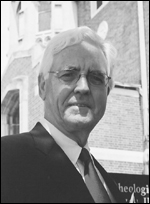
|
| One way that board member Howard Morgan stays involved with the life of the school is by auditing classes, six in three years, so far.
|
This has made trustees part of the life of the seminary, so much so that many of them, including Howard Morgan, a retired Citibank executive, regularly attend classes with seminary students. Morgan, who has been on the board for three years, has already audited six classes, including Hebrew Bible and apocalyptic literature.
Morgan is impressed not only by the high expectations for trustees, but the willingness of CTS to engage in innovative ministries. He points to the Center for Community Transformation, a $1.5 million project recently funded by Lilly Endowment Inc. that will put five students and two faculty members in three church sites for the next five years to do community ministry.
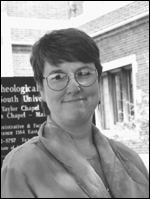
|
| Newly appointed board member Lynn Fitzgerald, a Roman Catholic, is eager to use her public relations expertise to help CTS market its unique vision.
|
The trustees are a diverse group not only in age and gender, but also in religion and denominational affiliation. There are two Jews on the board, and one of the newest trustees, Lynn Fitzgerald, is a Roman Catholic. Fitzgerald, who has just left a public relations firm, views CTS as a “public relations person’s dream,” an institution that has been a “pretty well-kept secret.” That’s one of the challenges that sparked her interest in the board. CTS had already done its re-visioning, and re-missioning. Now it needed to take it to the market. “There’s a great tradition in this seminary,” she said. “We just have to adapt to the changing environment.”
One of the two Jewish trustees is Bob Grossman, a Reform Jew who has served on the CTS board since 1989. Even before he joined the board, Grossman was aware of CTS because of the teaching of Professor Andre LaCocque, who taught the Old Testament as the prime testament and focused on its Jewish roots. Grossman has written an article on the Jewish dimensions of Jesus.
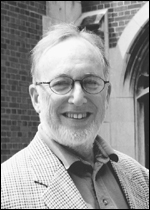
|
| Bob Grossman, one of two Jews on CTS’s board, says, “I’ve felt at home here.”
|
One of the key changes Grossman notes in the board is a move to more lay members who have brought business skills with them. “All of us have a deep religious feeling,” he said. Obviously there are some things he finds difficult as a Jew. “I don’t feel comfortable holding a cross.” But there is also a lot of common ground. “It has really been an enriching experience for me. I’ve felt at home here although I belong to a local Reform Jewish congregation. I think there is a lot in common between liberal Jews and liberal Protestants—more than with the ultra-right in our faiths.”
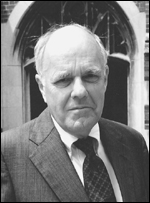
|
|
Life trustee Tom Allen saw faculty involvement as crucial to CTS’s financial turnaround.
|
Tom Allen, a life trustee who has sat on the board for most of the past fifteen years, says one of the problems CTS faced in the late 1980s was that its programs were “too good. We were spending money on a lot of good programs and surviving by dipping into our endowments. Everybody knew we had to do something.” But to do something, Allen said, the faculty had to be fully involved. “The first thing we did was take them into our full confidence. We saw it as a joint problem, and we did things by consensus as much as possible.”
Another long-time trustee, Rick Peterson, an attorney for the American Society of Orthopedic Surgeons, wondered whether CTS would survive its financial difficulties in the early 1990s. But the willingness of trustees, faculty and administration to work closely together helped not only during the time the school was in survival mode but in planning for the future.
“I felt it was important that we shine the light on what we really do best,” said Peterson. For him that’s offering a cutting-edge education to a diverse student body. Peterson is the first openly gay trustee to sit on the CTS board and reflects the seminary’s commitment to offering a welcoming environment for gay and lesbian students.
Looking Ahead
While there is much to celebrate about the turnaround at CTS, Thistlethwaite and the trustees are conscious of the danger that the school might drift into trying to do too much and make the same mistakes again. “I have a parade of people with excellent ideas coming into my office,” she said. “I usually have to say ‘we don’t do that.’ We have to avoid getting back into deficit. Saying ‘no’ is hard, and you have to say why not. But if I had said ‘yes’ to five things last year, we’d be back in a deficit.” As an example she cited a proposal to help young African Americans get into business. It’s a great idea, she said, but there was no money. More important, it’s not part of CTS’s core mission.
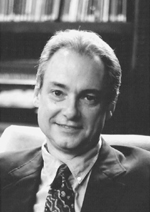
|
| Dow Edgerton, academic dean, applauds the increasing role and visibility of trustees at CTS.
|
CTS’s academic dean, Dow Edgerton, a CTS graduate who has taught at the seminary since 1983, agrees that one of the most important changes at CTS over the past two decades has been the role of trustees. When he first joined the faculty, he had almost nothing to do with trustees. Now they are a constant presence. “We’ve built really strong relationships,” he said. He gives some of the credit to trustee participation in the entire life of the seminary, including an overseas immersion program that included students, faculty, and trustees traveling in groups to Brazil, the Philippines, and South Africa.
Ken Stone, professor of Hebrew Bible, was aware of CTS’s financial difficulties when he applied for the job five years ago. “I came into the interview concerned, but I left positive and impressed. The faculty seemed very optimistic.” What drew Stone was a willingness to explore innovative approaches to theological education. He’s pleased with Thistlethwaite’s appointment as president, seeing it as a vote of confidence by trustees that affirms faculty members and their role in the turnaround.
Another recent faculty appointment, Laurel Schneider, a lesbian feminist theologian, says CTS has created a real “niche market” with its strengths in offering theological education to a racially diverse and sexually diverse student body. “It’s wonderful to be in an institution which sees my sexuality as an asset to the institution. That’s really unheard of, but it’s part of a commitment here to be inclusive.”
For Thistlethwaite, the CTS trustees, and faculty, many challenges lie ahead. Now that the budget is balanced, major capital expenditures are coming up. CTS hasn’t done a major capital campaign since 1902. Being on the cutting edge and raising money makes for an interesting balancing act, but Thistlethwaite believes the support is there. She looks at being president as more like being a church pastor than a faculty member. And right now she’s leading a congregation on an upswing.
Six Steps to Overcoming Financial Crisis
-
Tell yourself the truth. Examine accounting practices. Present financial data clearly. Find the sources of deficit spending. Get all constituencies involved.
-
Stop the red ink. Don’t fill vacancies. Eliminate salary increases. Set up supervisory task forces to do essential tasks. Restructure.
-
Don’t just survive. Develop a vision. Look at core strengths and values. Develop a clear identity and mission. Articulate that mission in compelling fashion. Formulate a core value statement which can be used often.
-
Build leadership. Build up the board. Emphasize the role of trustees. Critique models of governance. Replace administration if necessary.
-
Analyze for the future. Select growth areas and identify significant drains on resources. Establish new programs. Improve marketing and community profile.
-
Adopt a strategic plan. The plan should set out a vision, list core strengths and weaknesses, establish goals and strategies, and offer a blueprint for implementation.
—Susan Thistlethwaite
From a presentation to the Association of Theological Schools, Toronto, June 2000
Taking the Board Back to School
Part of Chicago Theological Seminary’s continuing effort to educate trustees on the ins and outs of reading financial statements is a new series of seminars starting this fall. The new CTS chief financial officer, Lynn Stegner, was scheduled to kick the series off with a one-hour presentation to the board at its October meeting.
While many trustees have business backgrounds and have no trouble reading a corporate balance sheet, Stegner, who has worked primarily in the not-for-profit sector, said a seminary’s financials present different interpretation challenges. Since trustees can’t look at a profit/loss or cash flow statement to get a picture of where the seminary is, more interpretation is needed. “One of the problems is that there is often a disparity between what you are presenting and what seems to be in the statement,” said Stegner.
One of the most obvious differences between corporate and not-for-profit environments is the diversity of income streams and the restrictions on certain funds. That means cash flow doesn’t really tell much of the story.
“One thing trustees have to learn is the disparity between investment income and what we are drawing from endowments,” she said. “In the corporate world if you’ve got investment income, you’ve earned it, but in our world endowment income is more slippery.”
One of the transitions for non-profits in recent years is from the old system of funds accounting to the more standard Generally Accepted Accounting Principles (GAAP) form of reporting. Under the old system each separate fund had its own statement. Under GAAP, statements are consolidated.
Stegner said trustees need to learn how to understand endowments and the concepts of restricted and unrestricted funds. “We still use endowment to describe any long-term investment,” she said. But restrictions, such as the use of endowed chairs or funding of specific programs through bequests, make the whole area more complex in terms of financial reporting. Stegner noted that restricted endowment income, by its nature, looks like a variant when it isn’t, as far as financial statements are concerned, because it is both revenue and expense.
The other question relating to endowments is the rate they are drawn down. Before the CTS turnaround, endowments were being drawn down at too high a rate. Part of the budgetary restraint in the early 1990s was cutting back the draw to sustainable levels.
Stegner isn’t surprised that trustees have a learning curve. The finance committee of her own congregation has business people who know how to read financials, but who have a lot to learn when they enter the church world.
—Bob Bettson
Photographs by Bob Bettson